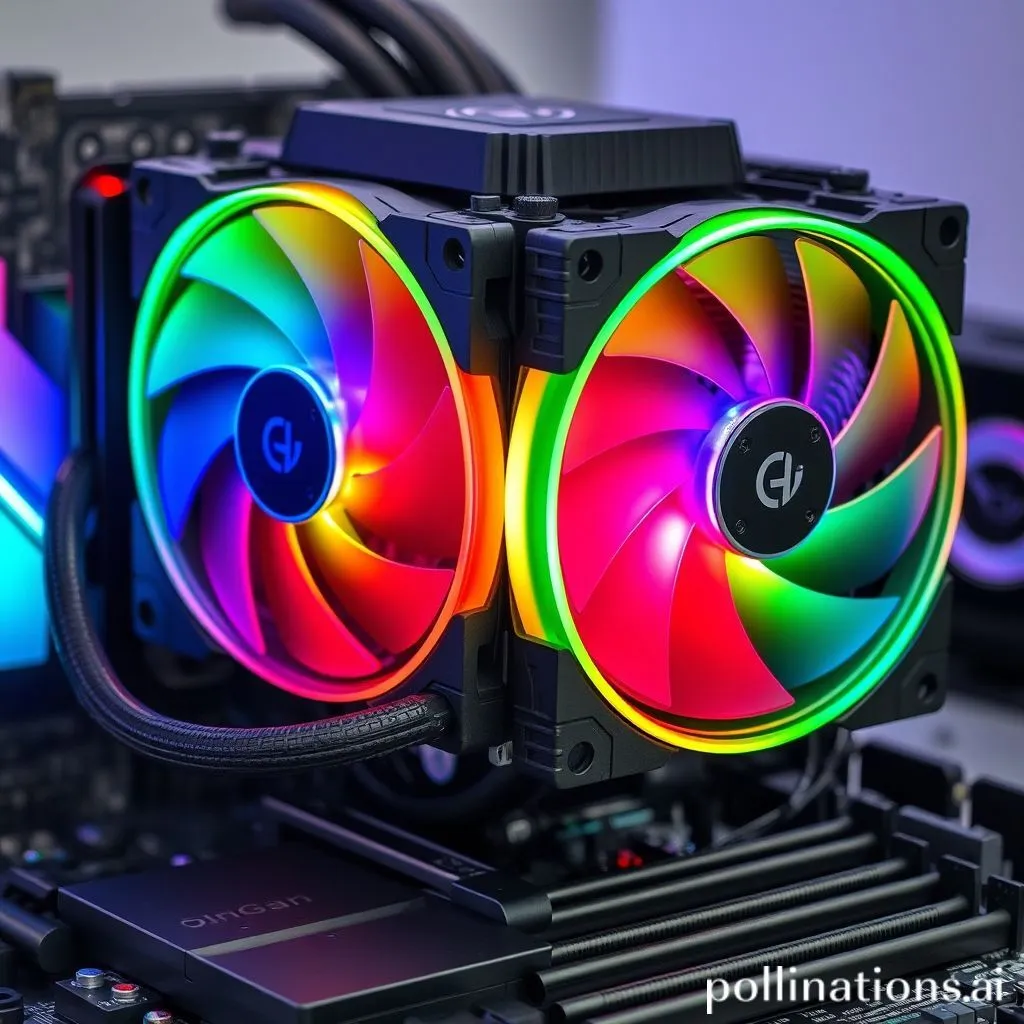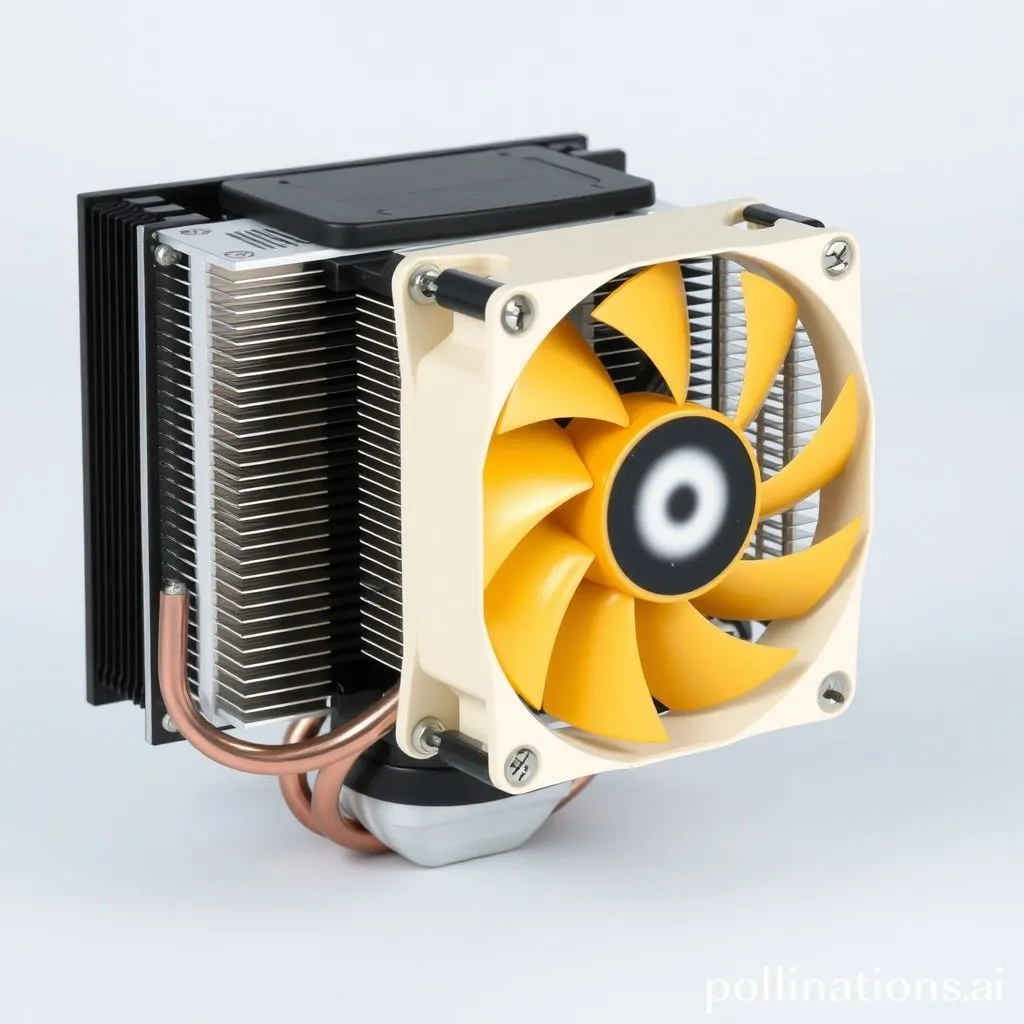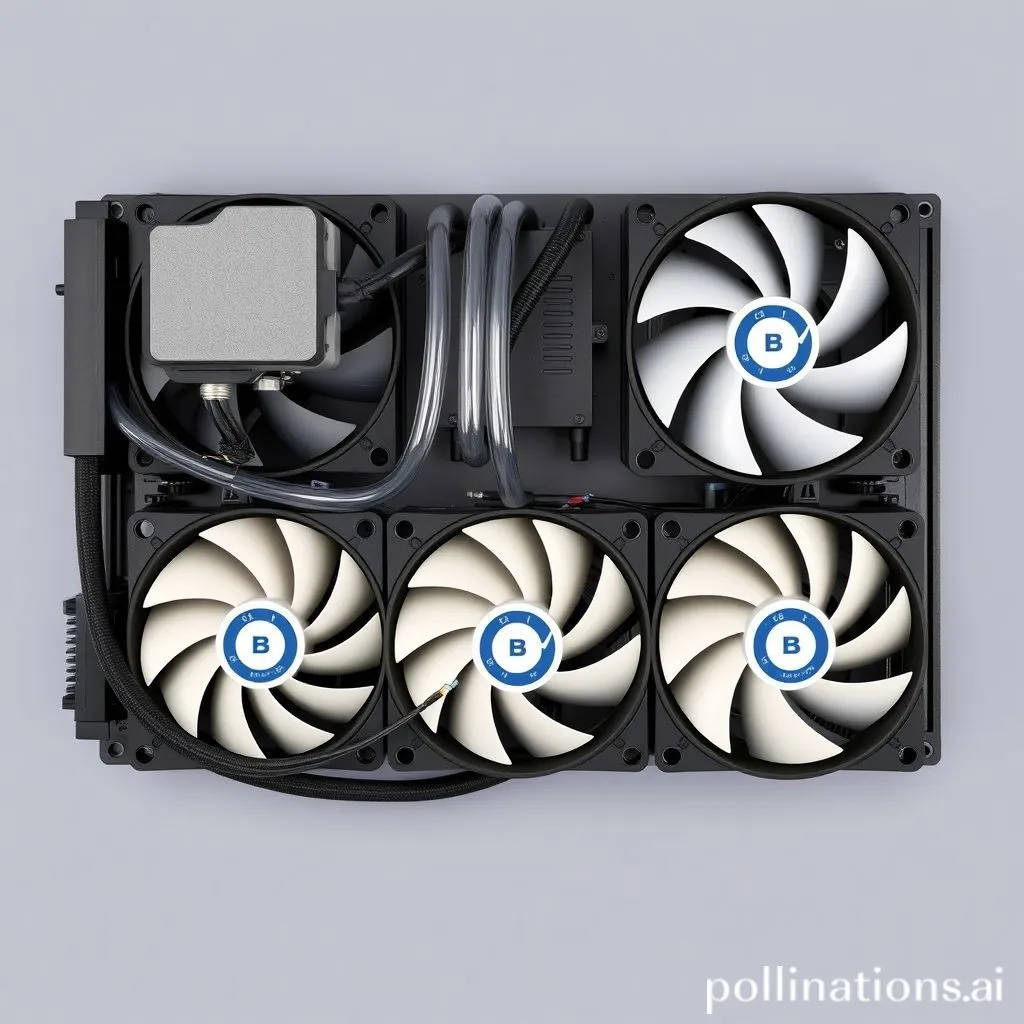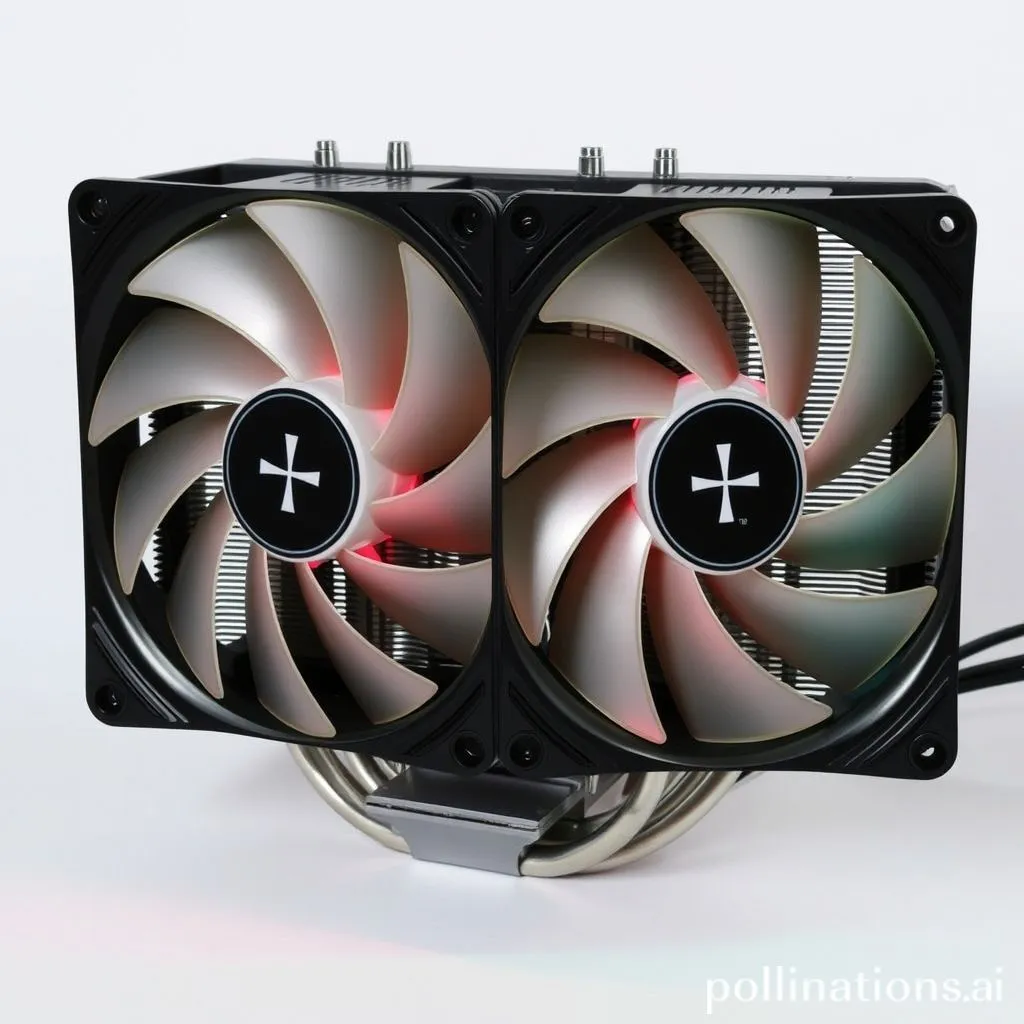Best Budget CPU Coolers for Gaming (Air & AIO Options Under $70 in 2025)

The Central Processing Unit (CPU) is the brain of your gaming PC, responsible for crunching game logic, AI, and physics. But just like any brain, it performs best when it’s cool. Without adequate cooling, your CPU can overheat, leading to performance throttling (slowing down to prevent damage) and even system instability. While high-end coolers can be expensive, in 2025, you can find incredibly effective budget CPU coolers for gaming under $70, offering both air and entry-level AIO (All-in-One liquid) solutions.
This guide is dedicated to helping you select the best budget CPU coolers to keep your processor running optimally during intense gaming sessions. We’ll explore the pros and cons of air vs. liquid cooling at this price point, break down key factors to consider, and recommend top picks that offer excellent cooling performance and quiet operation without breaking your budget.
Why a Dedicated CPU Cooler is Essential for Gaming
While many CPUs come with a basic stock cooler, a dedicated aftermarket CPU cooler offers significant advantages for gaming:
- Prevents Thermal Throttling: Ensures your CPU maintains its boost clock speeds under load, delivering consistent high performance.
- Lower Temperatures: Keeps your CPU cooler, extending its lifespan and improving stability.
- Quieter Operation: Aftermarket coolers often have larger fans and more efficient designs, resulting in lower noise levels compared to stock coolers.
- Overclocking Potential: A better cooler allows for mild to moderate CPU overclocking, squeezing more performance out of your processor.
- Aesthetics: Many coolers feature stylish designs and RGB lighting, enhancing the look of your PC build.
Air Cooling vs. AIO Liquid Cooling (Under $70)
At the sub-$70 price point, both air and entry-level AIO liquid coolers are viable. Understanding their differences is key:
Air Coolers
- How they work: Use a heatsink with metal fins and heat pipes to transfer heat from the CPU, which is then dissipated by a fan.
- Pros: Generally more affordable, very reliable (fewer moving parts than AIOs), easier to install, no risk of leaks. Offer great performance per dollar at this budget.
- Cons: Can be large and bulky, potentially interfering with RAM clearance or case side panels.

AIO Liquid Coolers (All-in-One)
- How they work: Use a pump to circulate liquid through a block on the CPU, to a radiator where fans dissipate heat.
- Pros: Often offer slightly better cooling for high-end CPUs (though less significant at budget level), better aesthetics (cleaner look), and don’t block RAM slots.
- Cons: More expensive (especially for good ones), pump can fail, minor risk of leaks (though rare), more complex installation, requires case space for radiator.
- Recommendation: For under $70, high-performance air coolers often provide the best cooling-to-price ratio and reliability. Entry-level AIOs at this price might have compromises.

Key Factors to Look For in a Budget CPU Cooler
When selecting a CPU cooler under $70 for your gaming PC, focus on these critical aspects:
1. TDP (Thermal Design Power) Rating
Ensure the cooler’s TDP rating is equal to or greater than your CPU’s TDP. This indicates the maximum heat the cooler can dissipate. For mid-range gaming CPUs (like Ryzen 5600, Core i5-12400F), a cooler rated for 120W-150W TDP is usually sufficient.
2. Socket Compatibility
Crucial! Ensure the cooler supports your CPU’s socket type (e.g., AMD AM4/AM5, Intel LGA1700). Most coolers come with mounting kits for multiple sockets.
3. Size & Clearance
- Air Coolers: Check the height of the air cooler to ensure it fits inside your PC case and doesn’t block tall RAM modules.
- AIOs: Ensure your PC case has sufficient mounting points for the radiator size (e.g., 120mm, 240mm, 360mm). For under $70, 120mm or 240mm AIOs are common.
4. Noise Levels (dBA)
Look for coolers with lower dBA (decibel) ratings, especially under load, for quieter operation. Large fans that spin slower generally produce less noise.
5. Fan Quality
Good quality fans provide better airflow at lower noise levels and have longer lifespans. Look for fluid dynamic bearings (FDB) or rifle bearings for durability and quietness.
Our Top Picks: Best Budget CPU Coolers for Gaming (Under $70 in 2025)
Here are our top recommendations for affordable CPU coolers that offer excellent performance and value for your gaming PC build in 2025:
1. Thermalright Peerless Assassin 120 SE / Phantom Spirit 120 SE (Best Air Cooler Value)

The Thermalright Peerless Assassin 120 SE (and its updated variant, Phantom Spirit 120 SE) are absolute titans in the budget CPU cooler market. These dual-tower, dual-fan air coolers offer performance comparable to much more expensive coolers, often found well under $50. They can effectively cool even higher-end CPUs and are perfect for mid-range gaming CPUs, providing exceptional value, quiet operation, and strong thermal performance.
- Pros: Outstanding cooling performance for the price, dual-tower/dual-fan design, quiet operation, wide compatibility.
- Cons: Can be very large (check case/RAM clearance), aesthetic is functional rather than flashy.
2. Deepcool AG400 / AK400 (Excellent Single-Tower Air Cooler)

The Deepcool AG400 and AK400 are fantastic single-tower air coolers that offer a perfect balance of cooling performance, low noise, and compact size. These coolers are ideal for most mid-range gaming CPUs, providing a significant upgrade over stock coolers. They are very easy to install and often found well under $30-$40, making them incredibly budget-friendly while offering reliable cooling.
- Pros: Very affordable, good cooling performance for single-tower, quiet operation, compact size (good RAM clearance), easy installation.
- Cons: Not suitable for heavy overclocking or very hot CPUs, basic aesthetics.
3. Arctic Freezer 34 eSports DUO (Strong Performance Air Cooler)

The Arctic Freezer 34 eSports DUO is a highly respected air cooler known for its excellent cooling performance and exceptionally quiet operation, thanks to its two high-quality BioniX P-fans. It’s often available for under $50-$60 and provides robust cooling for mid-range to even some higher-end CPUs, making it a strong contender for those who prioritize low noise and strong performance.
- Pros: Excellent cooling performance, extremely quiet operation, durable fans, sleek design.
- Cons: Slightly larger than single-tower coolers (check RAM/case clearance), installation can be a bit tricky.
Entry-Level AIO Options (If you really want liquid cooling under $70):
While good AIOs typically start above $70, you might find 120mm AIOs from brands like Cooler Master, Deepcool, or Thermaltake around this price, especially on sale. However, a good air cooler (like the Thermalright Peerless Assassin) will often outperform a budget 120mm AIO and be more reliable.
How We Selected These Budget CPU Coolers
Our selection process for the best budget CPU coolers focused on striking a balance between excellent thermal performance, quiet operation, and affordability (under $70). We prioritized air coolers for their reliability and value, while also briefly acknowledging entry-level AIOs. Key factors included TDP rating, socket compatibility, fan quality, and overall efficiency in preventing thermal throttling for mid-range gaming CPUs. We relied on extensive testing data and user reviews to ensure our recommendations are both effective and reliable.
Tips for Installing and Optimizing Your CPU Cooler
- Apply Thermal Paste Correctly: If your cooler doesn’t have pre-applied thermal paste, apply a pea-sized dot to the center of your CPU. Don’t use too much or too little.
- Check Fan Orientation: Ensure your cooler’s fans are oriented correctly to push air through the heatsink (or radiator) and towards your case’s exhaust fans for optimal airflow.
- Mount Firmly: Ensure the cooler is firmly mounted to the CPU, but don’t over-tighten screws.
- Check RAM Clearance (Air Coolers): Before tightening, ensure the cooler doesn’t block your RAM slots, especially if you have tall RGB RAM modules.
- Update BIOS/Drivers: Ensure your motherboard BIOS and chipset drivers are up to date for optimal CPU performance.
- Monitor Temperatures: Use software like HWMonitor, HWiNFO, or your motherboard’s utility to monitor CPU temperatures during gaming. Aim for temps under 80-85°C under heavy load.
Conclusion
Keeping your CPU cool is non-negotiable for stable gaming performance and component longevity. In 2025, you have excellent options for best budget CPU coolers for gaming under $70, whether you prefer the reliability and raw cooling power of air coolers or the sleek aesthetic of entry-level AIOs. Coolers like the Thermalright Peerless Assassin 120 SE, Deepcool AG400/AK400, and Arctic Freezer 34 eSports DUO stand out as top choices, providing exceptional value and ensuring your CPU performs its best during even the most demanding gaming sessions.
By prioritizing TDP compatibility, socket support, and fan quality, you can confidently select a cooler that provides silent and effective heat dissipation for your gaming rig. Get ready for a cooler, more stable gaming experience! What’s your biggest concern when picking a CPU cooler? Share your thoughts in the comments below!